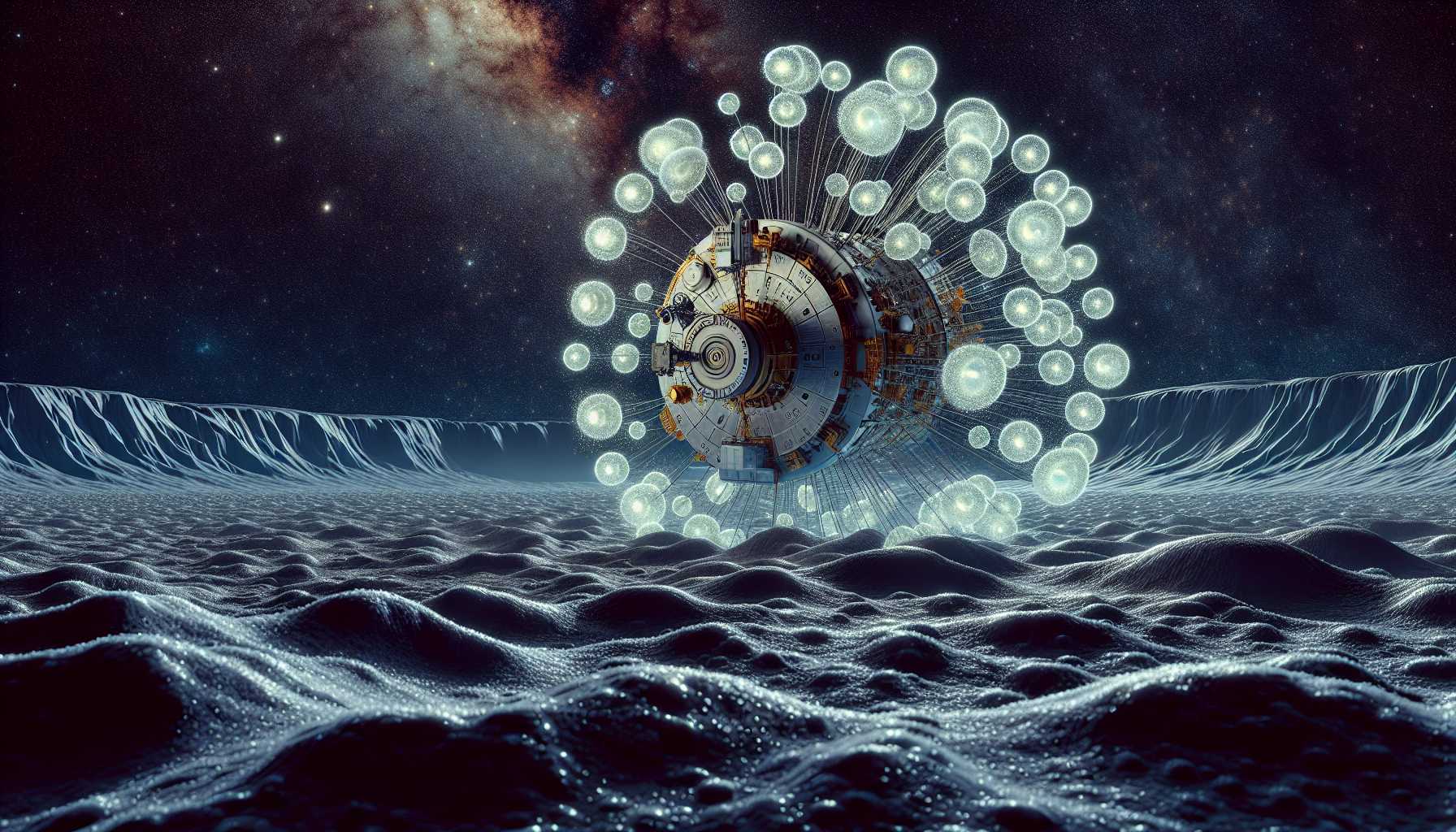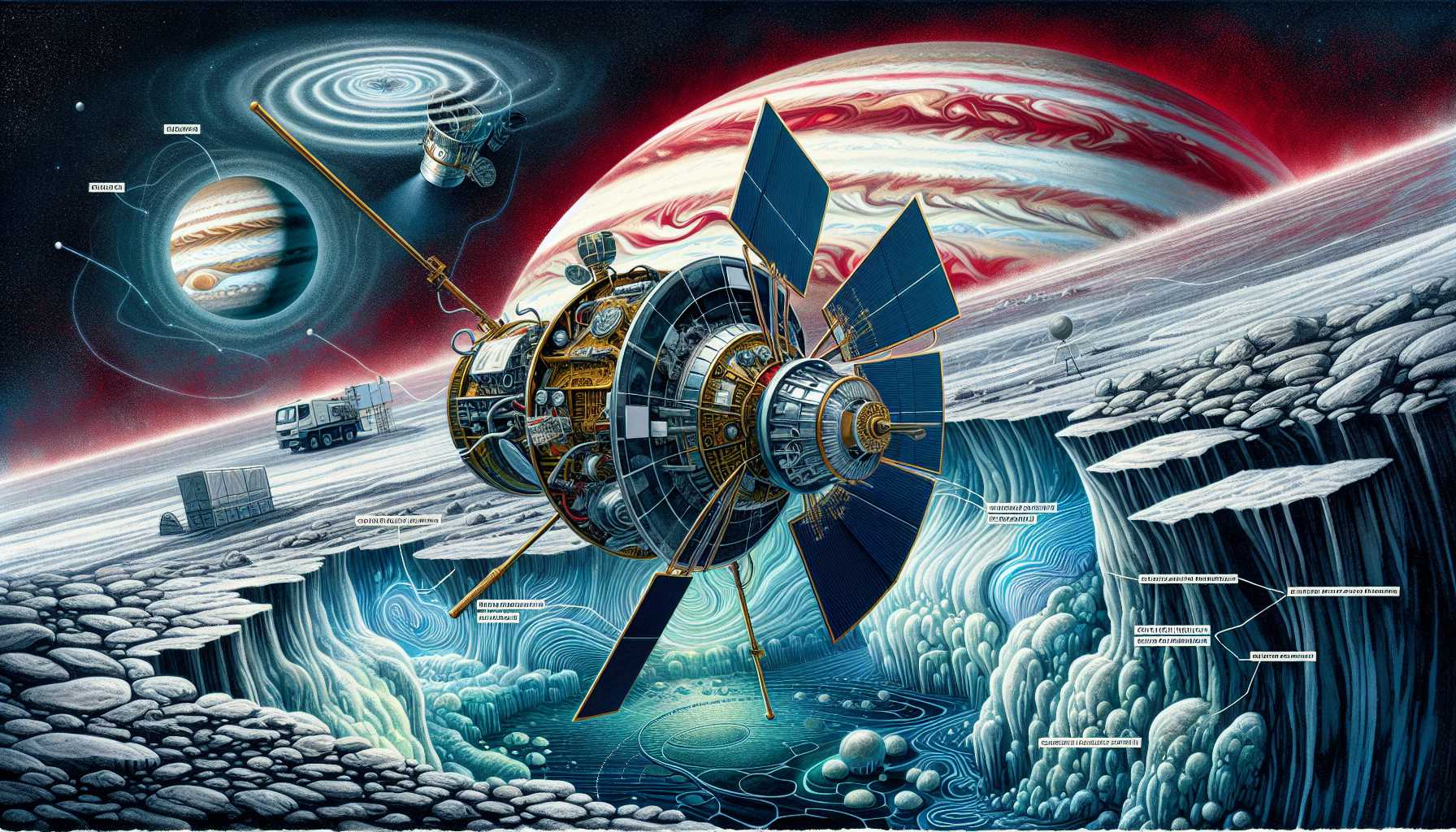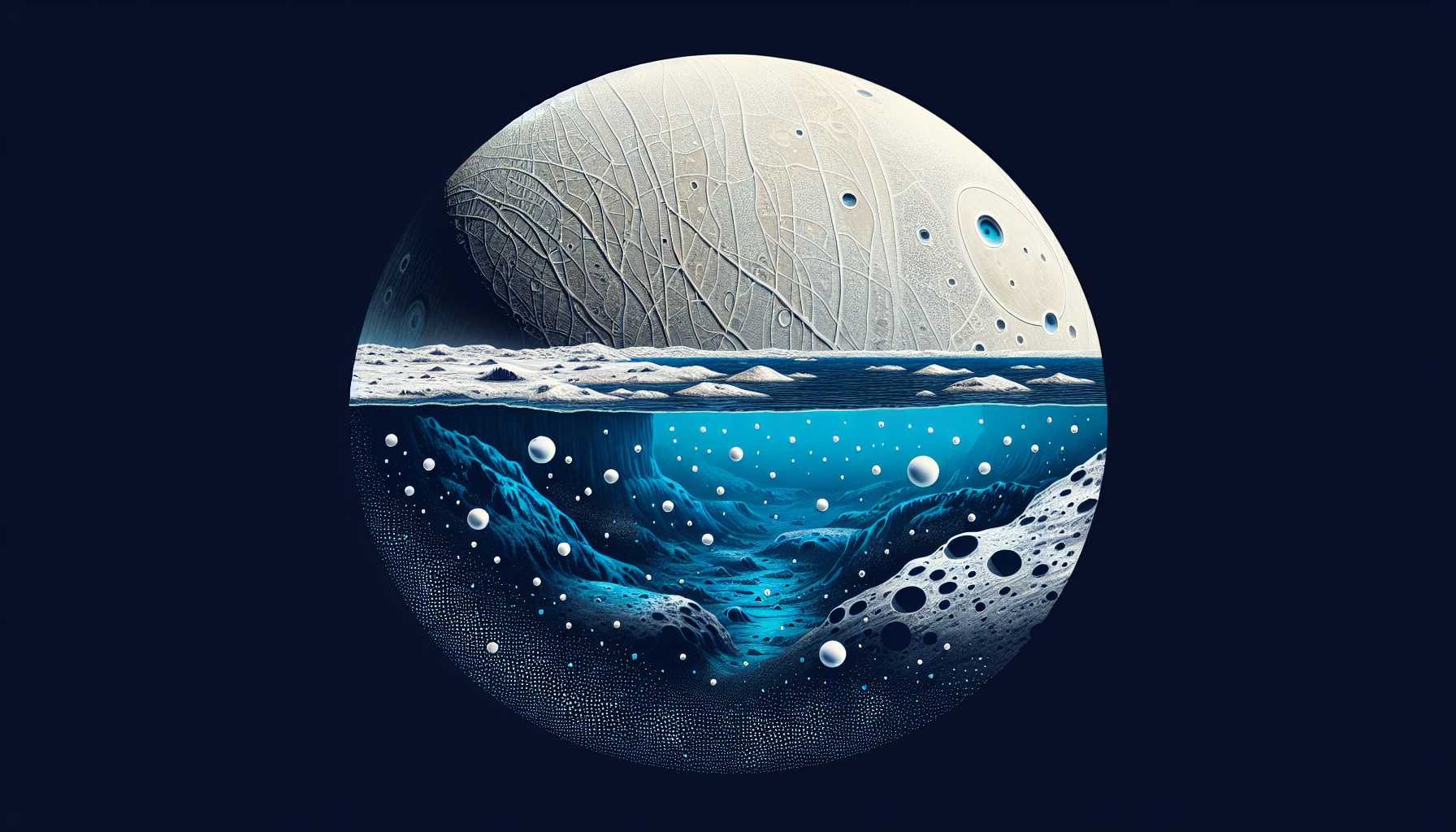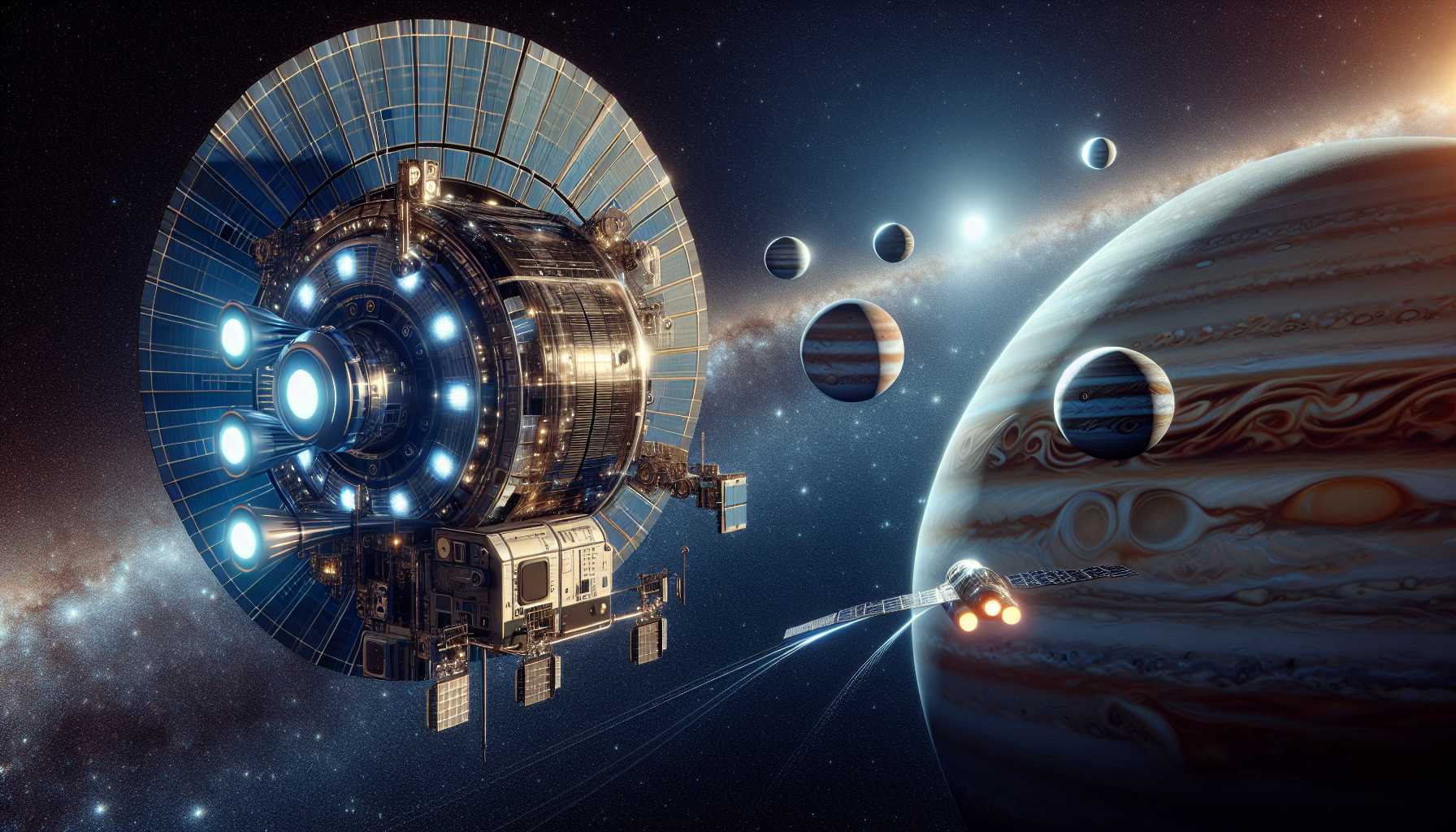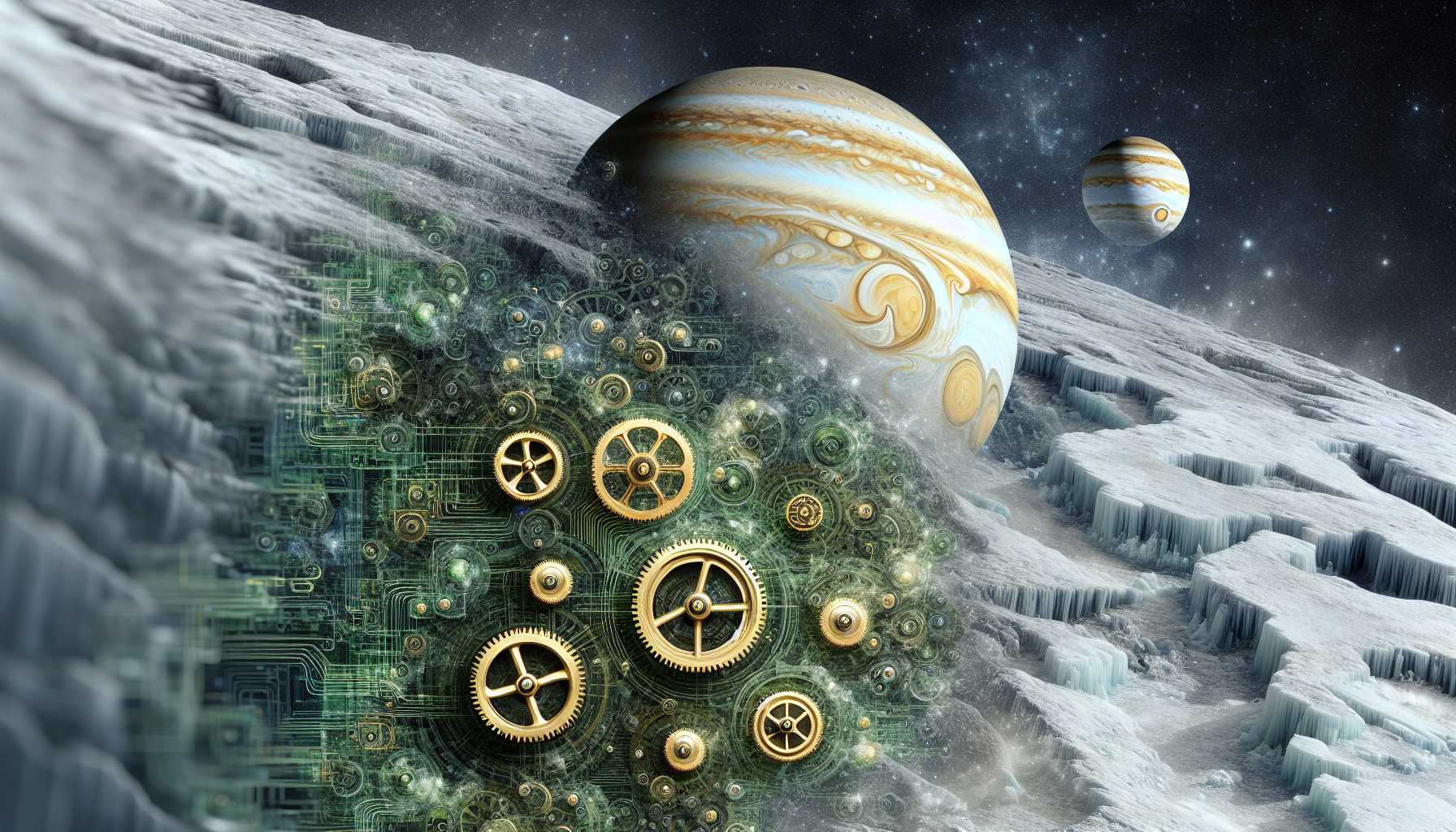?
Greetings, tech enthusiasts, space explorers, and everyone who marvels at the mysteries of the cosmos! Take a seat, because today we’re diving into the icy depths of Jupiter’s moon Europa, a celestial body that has long tantalized scientists and stargazers alike with its potential to harbor life. Based on the most recent data beamed back from NASA’s Juno spacecraft, Europa isn’t just chilling in the shadow of the gas giant—it’s churning out oxygen at a rate that could potentially support a small town of earthly adventurers. This isn’t your average tech bulletin; prepare for a cosmic tale of ice, oxygen, and the endless possibilities that lie within our solar system.
Europa: A Frozen World with a Breath of Fresh Air
Did you ever think a moon could be likened to a high-tech oxygen factory? That’s exactly what’s happening on Europa, one of the most intriguing bodies in our solar system. Captivating new findings reveal that this icy moon is producing oxygen—and not just a little puff here and there, but a whopping 1,000 tons of it every single day. This is the sort of fodder that fuels the dreams of astrobiologists, who are keenly interested in the possibility that life could thrive in Europa’s subsurface ocean.
The Aura of Europa: Unraveling Juno’s Findings
As a product manager in the tech industry, I’m no stranger to delving into the nitty-gritty of data—and that’s exactly what the researchers behind the latest study, published in Nature Astronomy, did. They rolled up their virtual sleeves and got down to business with data from Juno’s Jovian Auroral Distributions Experiment, aka JADE. Their goal? To figure out just how much oxygen Europa is pumping out based on the hydrogen outgassing from its icy surface.
Imagine Europa like an ice sculpture slowly melting in the sun—except here, the sun is a high-powered stream of ionized particles thrown around by Jupiter’s incredibly strong magnetic field. The Jovian magnetosphere acts like a celestial artist, sculpting the moon with every particle impact and peeling away molecule after molecule to yield hydrogen and oxygen. It’s impressive, it’s powerful, and it’s a stark reminder of the dynamic processes at work within our solar system.
The Significance of Oxygen: Breathing Life Into Astrobiology
For us here on Earth, oxygen equates to life. So, when we hear about a moon, 1,940 miles in diameter, putting out enough oxygen for a million humans, we’re naturally inclined to book our interstellar tickets. But hold your space-horses! The reality is that, while 1,000 tons of oxygen is a massive amount, it’s still less than what some prior estimates suggested. Yet, this level of oxygen production has profound implications for the potential habitability of Europa’s ocean. It’s a delicate dance between hope and hard science, one that has astrobiologists and tech investors like myself on the edge of our seats.
Beyond Juno: The Future of Europa Exploration
Juno has been the paparazzo of the Jovian system since its 2011 launch, snapping stunning images and gathering data on Jupiter’s moons, with a particular focus on Europa and the volcanic Io. As the spacecraft prepares to bid adieu to Europa and say hello to Io on April 9, we can’t help but reflect on the tantalizing questions left in its wake. Is Europa the spa of the solar system, its ocean a cosmic hot tub for alien life forms? The future is as bright as the reflection off Europa’s icy surface, with NASA’s Europa Clipper mission on the books to arrive in 2030, aiming to conclusively determine if life’s building blocks exist on this distant moon. And let’s not forget the European Space Agency’s JUICE mission—it’s like Apple, Google, and SpaceX decided to throw a party, and everyone’s invited. The anticipation is palpable, and the prospects of discovery are as vast as space itself.
Wrap-Up: A Cosmic Opportunity for Tech and Exploration
As a tech investor and expert, I see the exploration of Europa as a testament to the intersection of technology and human curiosity. Every new finding, every data point, represents a leap in our understanding of the universe. For those of us grounded on planet Earth, it’s an exciting time to be involved in tech and space exploration. We stand on the precipice of discovery, ready to leap into the void and find out what secrets Europa—and indeed, the rest of the solar system—has to share.
In conclusion, the oxygen production on Europa is not just a dry piece of scientific trivia. It’s a tantalizing hint of what might lie in the deep, dark oceans of this distant world. The tech industry often borrows from the lingo of space exploration, speaking of ‘launching’ products and aiming for the ‘stars’ with innovation. Today, we return the favor, celebrating the real celestial achievements and looking forward to the next chapter in the story of Europa. Stay tethered to this blog for more tech news delivered with a dash of cosmic wonder, and remember, whether it’s a moon, a gadget, or the latest app, the universe is full of surprises just waiting to be discovered. Until next time, I leave you with a thought—in the grand scheme of things, we may not be so different from Europa, continuing to evolve and breathing new life into the cosmos of technology.

